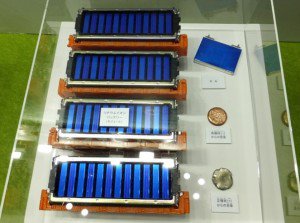Sunday, 14/12/2025 | 05:37 GMT+7
This process was introduced at Eco-Projects 2015 in Tokyo. The program aims to utilize salvaged materials from the li-ion batteries for nickel-metal-hyrdride (NiMH) units.
How does the Honda battery recycling process work? Honda takes the positive electrode material from the li-ion battery and reuses it as the negative electrode material of the NiMH battery. Electrolyte from the li-ion battery is also reused.
The goal of the company is to create technology that promotes recycling of automobile li-ion batteries, especially as demand starts to grow for vehicles powered by such units.
As the program requires dismantling cells before the components that cannot be recycled are destroyed, the recycling saves time and labor of separating impurities after taking the nickel-cobalt alloy from the original unit.

The separation process divides positive and negative electrode materials. The positive-electrode material is melted to make the alloy, which originally also includes aluminium. The aluminum is removed, leaving the usable nickel and cobalt alloy for NiMH batteries. The negative electrode materials are reduced to create copper alloy. This process also allows for electrolyte and cell cases to be recycled or reused, instead of destroyed.
As the separation process is relatively simple, the Honda battery recycling program is expected to become a low-cost technology solution for the company. We can commend the carmaker for adding another layer of sustainability to car technology. With this also being a basic process, it bodes well for adoption in the future, possibly by other manufacturers.
Ngoc Diep (The Green Optimistic)








 Enhancing capacity to develop and implement energy efficiency policies at local level
Enhancing capacity to develop and implement energy efficiency policies at local level
 Bosch Vietnam Plant Benefits from Investment in Energy Efficiency
Bosch Vietnam Plant Benefits from Investment in Energy Efficiency
 Webinar 2: “Financial Support for Energy Efficiency Enterprises – Opportunities and Challenges”
Webinar 2: “Financial Support for Energy Efficiency Enterprises – Opportunities and Challenges”
 Vietnamese enterprises achieve green growth and cut costs through energy efficiency
Vietnamese enterprises achieve green growth and cut costs through energy efficiency
 Capacity Building for Program Implementing Entity
Capacity Building for Program Implementing Entity
 Promoting Energy Efficiency for Technical Staff of Brick and Ceramic Sector
Promoting Energy Efficiency for Technical Staff of Brick and Ceramic Sector
 Enhance Energy Efficiency Knowledge for Managers of Cement Industrial Enterprises
Enhance Energy Efficiency Knowledge for Managers of Cement Industrial Enterprises